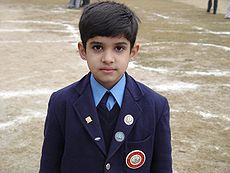The first is the limitations of the technology, both in its ability and availability. First of all, there is the problem with cost[1] and the simple availability of technological resources such as the Internet (either non-existent as can be the case in many developing countries or lack of bandwidth, as can be the case just about anywhere). [3] However, the limitations that current computer technology has can be problematic as well. While computer technology has improved greatly in the last three decades, demands placed on CALL have grown even more so. One major goal is to have computers with which students can have true, human-like interaction, esp. for speaking practice; however, the technology is far from that point. Not to mention that if the computer cannot evaluate a learner’s speech exactly, it is almost no use at all. [7][1]
However, most of the problems that appear in the literature on CALL have more to do with teacher expectations and apprehensions about what computers can do for the language learner and teacher. Teachers and administrators tend to either think computers are worthless or even harmful, or can do far more than they are really capable of. [6]
Reluctance on part of teachers can come from lack of understanding and even fear of technology. Often CALL is not implemented unless it is required even if training is offered to teachers. [6] One reason for this is that from the 1960’s to the 1980’s, computer technology was limited mostly for the sciences, creating a real and psychological distance for language teaching. [14] Language teachers can be more comfortable with textbooks because it is what they are used do, and there is the idea that the use of computers threatens traditional literacy skills since such are heavily tied to books. [14] [15] These stem in part because there is a significant generation gap between teachers (many of whom did not grow up with computers) and students (who did grow up with them).
Also, teachers may resist because CALL activities can be more difficult to evaluate than more traditional exercises. For example, most Mexican teachers feel strongly that a completed fill-in textbook “proves” learning. [15] While students may be motivated by exercises like branching stories, adventures, puzzles or logic, these activities provide little in the way of systematic evaluation of progress. [3]
Even teachers who may otherwise see benefits to CALL may be put off by the time and effort needed to implement it well. However “seductive” the power of computing systems may be[3], like with the introduction of the audio language lab in the 1960’s, those who simply expect results by purchasing expensive equipment are likely to be disappointed. [1] To begin with, there are the simple matters of sorting through the numerous resources that exist and getting students ready to use computer resources. With Internet sites alone, it can be very difficult to know where to begin, and if students are unfamiliar with the resource to be used, the teacher must take time to teach it. [3] Also, there is a lack of unified theoretical framework for designing and evaluating CALL systems as well as absence of conclusive empirical evidence for the pedagogical benefits of computers in language. [7] Most teachers lack the time or training to create CALL-based assignments, leading to reliance on commercially-published sources, whether such are pedagogically sound or not. [1]
However, the most crucial factor that can lead to the failure of CALL, or the use of any technology in language education is not the failure of the technology, but rather the failure to invest adequately in teacher training and the lack of imagination to take advantage of the technology's flexibility. Graham Davies states that too often, technology is seen as a panacea, especially by administrators, and the human component necessary to make it beneficial is ignored. Under these circumstances, he argues, "it is probably better to dispense with technology altogether".[8]
Rody Klein, Clint Rogers and Zhang Yong (2006), studying the adoption of Learning Technologies in Chinese schools and colleges, have also pointed out that the spread of video games on electronic devices, including computers, dictionaries and mobile phones, is feared in most Chinese institutions. And yet every classroom is very well equipped with a desk imbedded computer, Internet connexion, microphone, video projector and remote controlled screen to be used by the teacher for multimedia presentations. Very often the 'leaders' prefer to ban completely Learning Technologies for students at the dismay of many foreign ESL teachers. Books and exercise books still prevail. In order to enhance CALL for teaching ESL and other languages in developing countries, it would be also crucial to teach students how to learn by themselves and develop the capacity to practice self evaluation and enhance intrinsic motivation. Tests and quizzes should be designed accordingly to encourage and enhance students autonomous practice. Teachers using CALL should be computer literate and trained continuously. Ideally each Foreign Language Department using CALL should hire an experienced Computer Scientist who could assist teachers. That expert should demonstrate dual expertise both in Education and Learning Technologies.
Diposkan oleh muhammad ridho alsri di 02:12 0 komentar
Label: call
Posted by ryan hardy at 11:24 AM 0 comments
Labels: call
Wednesday, December 16, 2009
* Michel Faber
* The Guardian, Saturday 30 July 2005
Dirty Words: The Story of Sex Talk by Mark Morton
Buy Dirty Words: The Story of Sex Talk at the Guardian bookshop
Dirty Words: The Story of Sex Talk
by Mark Morton
368pp, Atlantic Books, £12.99
Seductively billed as "the perfect book for lovers, and language-lovers, alike", Dirty Words attempts to catalogue every English word ever used for sexual purposes. In an orgy of etymological fervour, it ploughs into the roots of love, limerence, glamour, cunnilingus and fartleberries. There are 1,300 terms listed for the male sex organ, many of them amusingly surreal (hairy banana, blue-veined custard chucker, whoopee stick, finger puppet) and many others pitiably desperate (dangling participle, male interfemoral infidel). I doubt that this is the perfect book for lovers, but it's certainly the perfect book for anyone who can imagine themselves enlivening a dull dinner party by saying: "Did you know that the word felch denotes the act of sucking one's own semen out of another person's buttocks?"
The joy of lascivious lingo is diminished, however, by Morton's approach and writing style. Tracing the evolution of words back to their conjectural proto-Indo-European origins is a scholarly business, yet this book seems touched by a nymphomaniac desire to attract all passersby, regardless of their levels of intellect or interest. So hard does Morton strive to service everyone, and so determined is he not to appear offputtingly intellectual, that he often seems to be addressing Homer Simpsons who've never given a thought to language before: "Clearly, Old English doesn't look much like Modern English - you might even say they're different languages. Then again, you probably don't resemble your grandmother, and yet think of how much, at the genetic level, you owe her: if she hadn't existed, you wouldn't be here." (This observation, already twice as long as it needs to be, is elaborated for a further six lines.)
From the outset, Morton promises not to trouble us with "squiggly marks" (ie, lexicographical symbols). He also cautions us against reading too much of his book at once, because "you'll probably get a headache". His day job as a professor at the University of Winnipeg makes him eminently qualified to discuss ribald Shakespearian puns, but perhaps his lifelong devotion to pedagogy blinds him to the fact that not everybody has yet to glean the basics of an education. Some of his gestures are so condescending as to be unintentionally parodic: "Mother-fucker emerged as an insult in the 1920s, though that incest taboo was articulated much earlier, most notably in Oedipus Rex, a Greek tragedy written in the fifth century BC by Sophocles."
Dirty Words is plumped out to 368 pages by a shameful amount of padding. Morton, apart from being a waffly stylist, cannot resist telling us the origins of words that have little or nothing to do with his subject. "Amazingly, the word mouse is closely related to both muscle and mussel," he enthuses, and there are hundreds more of these Reader's Digest tickles of edification. Morton's passion for etymology is commendable, but an editor should have reminded him what book he was supposed to be writing.
Sadly, Morton's labour of love seems to have been unassisted. Several glaring copyediting errors in the introduction (including one in the third sentence) make it obvious that Dirty Words was originally called The Lover's Tongue, before the UK publishers ditched this title - evidently in haste - in favour of a sensationalist surrogate. Real shock value, however, is supplied by Atlantic's slipshod production of the book. There is a chunk of text missing between pages 24 and 25, and a disconnected paragraph on the etymology of bunkum is left stranded on page 220. Morton's heavyhanded humour when he denies imagined accusations of coprophemia, aischrolatreia and lalochezia by saying that "you - dear reader - can decide for yourself after perusing the remaining two hundred pages" is made heavier still by the fact that nobody at Atlantic noticed that this estimate is 100 pages out. Editorial passivity may also be the reason why no one thought to anglicise the confusing American usages of pants and ass, cut out the Canadian in-jokes, or dispense with Morton's step-by-step explanation of how Cockney rhyming slang works. There is no index, so the chances of finding that elusive synonym for gamahuching a second time are slim.
Sometimes, the saving grace of an annoyingly written textbook is that it offers information unavailable elsewhere, or collects material from disparate sources in a uniquely convenient form. Dirty Words aims for the latter distinction; Morton has done an admirable job combing through the available literature on "indecent" words - shelfloads of dictionaries, thesauruses, histories, and specialist studies - and collating the results in a single volume. While there are websites such as sex-lexis.com that list all the terms in Morton's book and more, there is, to my knowledge, no other book that offers such a compendious and up-to-date trove of erotic etymology. The closest contender is Hugh Rawson's A Dictionary of Invective, which is narrower in scope (though not as narrow as its title suggests) and goes no further than 1989.
For an authority who might influence people's attitudes towards language, Morton is regrettably reluctant to use basic English words himself. Whenever he speaks in his own, "neutral" voice, he resorts to copulate and the deplorable pudendum (a term derived from a Latin verb meaning "to cause shame"). Far from proving that the study of language can cure deep-seated anxieties about "dirty" words, Morton merely confirms the cliché of the donnish lexicographer, goggling at exotic linguistic behaviours he's too prim to adopt.





